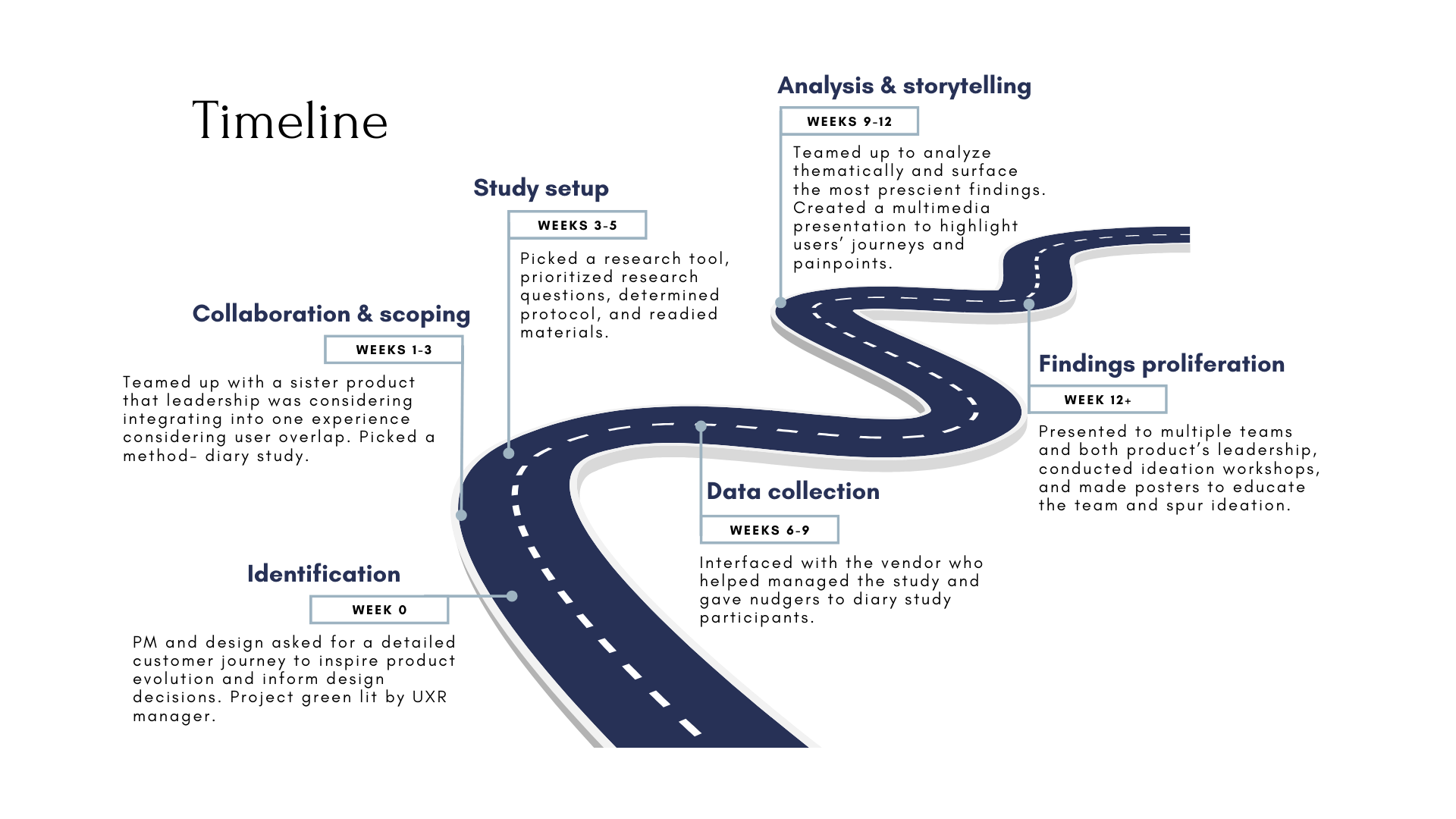Mapping the user journey
Context
Understanding how users naturally go about solving their home services needs is critical to understanding how this product can better fit into users’ lives and what needs are not currently being met. Simultaneously, this and a peer product are in the process of merging to bring a unified user experience. This necessitates cross-product collaboration when mapping our user’s experience.
research goals
Collaborate with UXR from our peer product to document consumers’ life cycle journey looking for a home service provider. The goal is to capture, in a naturalistic way, the full journey from identification of a home service need through getting the service done, and any post-service actions. This is a foundational study with the goal of informing product direction of both our and our peer product.
stakeholders
METHODS
Working with 2 other UXRs, a diary study followed 100 consumer users for 30 days as they searched for a home service professional and had their service done. Users were searching for 1 of 10 core business verticals such as plumbing and lawn care. Participants checked in daily regarding their actions they were taking, the tools used, and their sentiment about the process.
Analysis was done collaboratively by grouping themes across the journey and within particular parts of the journey until a comprehensive story unfolded.
IMPACT
A multimedia deck designed to showcase the consumer as a whole human and elicit empathy for the journey was presented to senior leadership of both products as well as individual product teams. Findings were pertinent to the overall structure of our consumer understanding as well as specific to certain features. For example, our previous understanding of the consumer journey became more nuanced and complicated, and findings about how consumers search over time spurred a feature to help consumers track their progress when looking for a home services provider.
Findings from the study continue to be cited by product leadership when discussing which direction to take the product. It is also being used to build official critical user journeys and features that allow consumer users to track their journey and decide on a provider.


